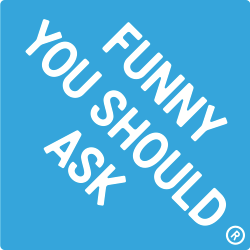This is the second part of a few, deconstructing and highlighting some important aspects of the concept of digital strategy and what to consider when approaching it. You’ll find part 1 here.
Part 1 was much about the power of words and definitions, and the need to actively reflect on this with the group responsible for thinking “digital strategy”. It also highlighted the power of using a networked perspective for understanding the integration, organisation wide implications as well as stakeholder alignment.
In this second part I’d like to touch on how brand culture and purpose matters greatly, and how reframing this, and ones market, creates a vantage point that fuels the thinking. I use two fairly well known examples to do this.
Ford manufactures cars, but a while back they redefined themselves as a mobility brand (actually, the original mission was to make America mobile, so not that drastic change…). What does that do? Obviously that depends. But there’s a number of things that fit very nicely together in business strategy, but I’d like to include it in digital strategy as we define that as broadly as strategic thinking in a digital (networked) world.
The mobility brand Ford saw the number of 16 year olds who get their first car drop considerably. More numbers are showing the same changes in demand. But if you’re not in the business of selling cars, but rather mobility, there’s another side to that.
Ford partnered with Zipcar which offers a subscription based model for access to mobility, in the form of cars. This could have been done without Zipcar. It is now done in different shapes and forms by many car manufacturers (I recently saw that Audi pushes micro-sharing experience, collective access to Audi cars)
Zipcar bought by Avis, but what if Ford bought it? Making money from providing mobility services in Volvos, BMWs etc? Competitors become collaborators. The revenue model drastically different. Not switching, complementing. All facilitated by new, networked, technology. But, more importantly: new self perception on behalf of the brand. The organisation, and how everyone sees value creation.
Slideshare: Part 2 touches on slide 5-7
reframing the market and the business
Product development vs business development. A networked perspective can dramatically fuel the thinking in business development. Looking at the brand, its purpose and meaning in peoples lives, is an important part of digital strategy. It might make it inseparable from business strategy, that’s fine. That’s actually just right. And here’s also where it becomes something bigger than a digital thing. That’s important, because when it’s a business matter, and even a cultural matter, you (still) have a better shot at getting more people excited and onboard.
The vast majority still don’t feel ”digitally savvy” and hence exclude themselves from ”digital” projects. Many are literally scared of it. But cultural transformation, processes, thinking about markets and business – there’s where you might find those people.
I’ve jotted down some thinking on meaning markets before. In the case with Uber, on slide 6, they think of themselves in a number of ways appart from ”taxi company”. One is as a logistics platform. What makes sense when you’re a logistics platform? Partnership with destinations. An open API. Revenue sharing between company and private drivers carrying out the transportation. All of the things that any taxi company could have done, but didn’t. Because their culture, self-perception and view on value creation, doesn’t allow for it. That’s right, it doesn’t allow for it. That’s how strong impact culture has on ideas. It’s back to definitions in a sense.
- Always include, and even describe, your digital project/initiative as a (organizational) cultural one. You benefit from appealing to people who dislikes and even fear digital.
- Rethink your market. Do the product vs. meaning exercise. What is your product? What is the meaning of you, and that product/service, in peoples’ lives? Then think about what your market really is. I’ve heard Unilever is very much in ”home care”, aiming to ”free up family time”. So how about a global platform for subscription based home-cleaning, laundry service, laundry pickup etc?
- See also a method called Jobs To Be Done. This is not equating an initiative around digital strategy with innovation, but it is highlighting the perfect occasion for truly taking a stab at preemptively exploring ”how the business might change”.
OK. So two posts in and still no focus on media channels, social platforms and communication. I don’t think the next one will be either.

